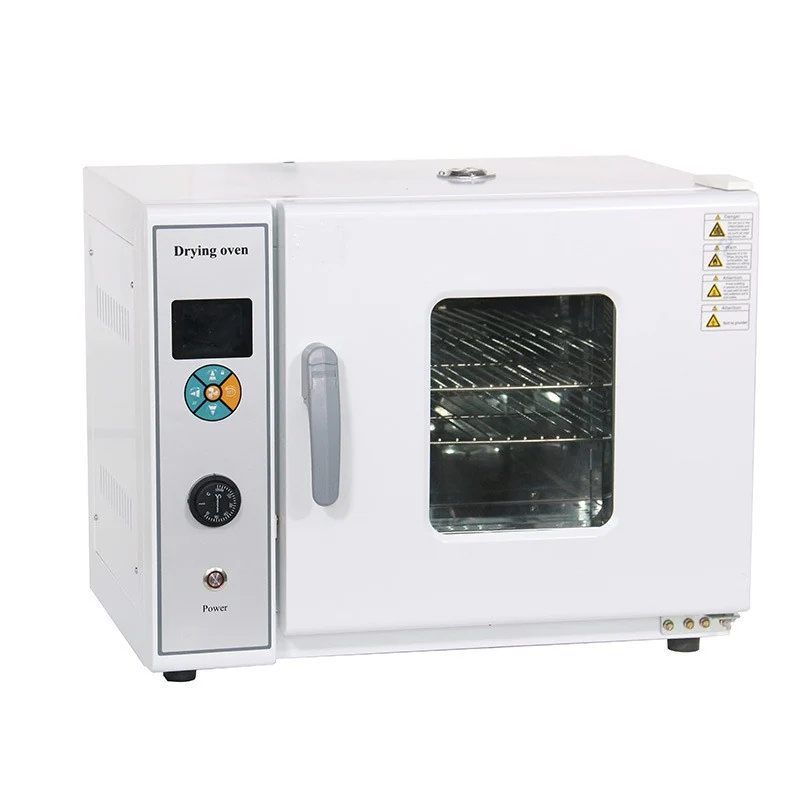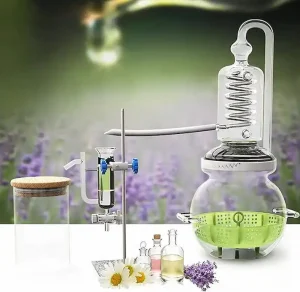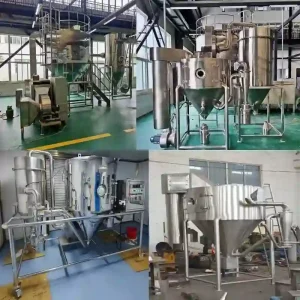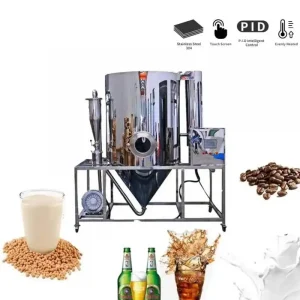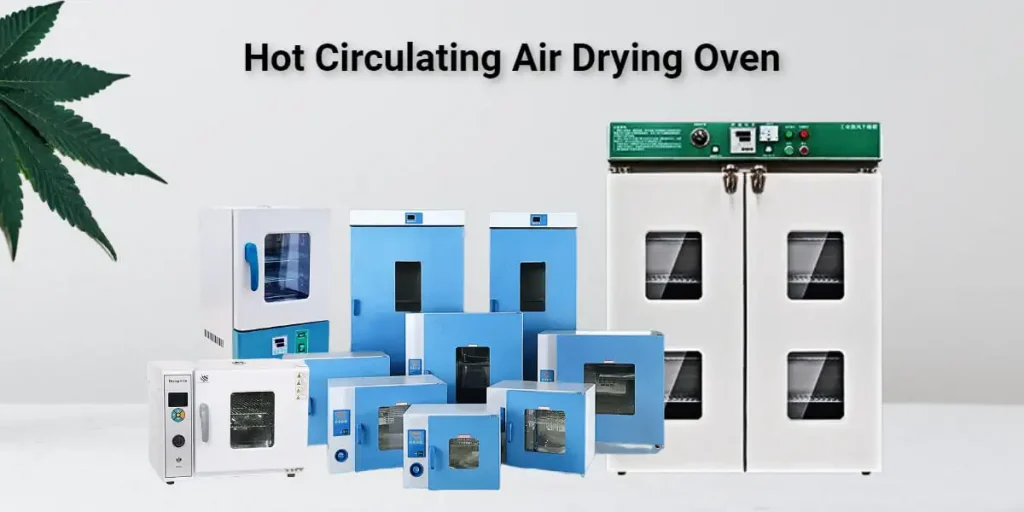
Introduction
Industrial Baking Equipment Revolutionizes Scientific Research
In the realm of thermal processing, heat treatment, and material testing, industrial baking equipment has made remarkable advancements. Among these innovations, the convection oven stands out as a versatile and highly efficient option. In this article, we will delve into the significance of advanced lab hot air ovens, also known as heat circulation ovens, in scientific research. We will explore their diverse applications, ranging from batch baking to precision heating, and delve into how they ensure uniformity and accuracy in thermal processes.
Construction and Components of Hot Air Ovens
Hot air ovens are essential laboratory equipment designed for various heating and drying applications. They consist of several key components and a specific construction to ensure efficient and controlled heat distribution. The main components and their roles in hot air ovens are as follows:
- Chamber or Cavity: The chamber is the central space where the heating and drying take place. It is typically constructed using stainless steel or other materials with good heat resistance and durability. The size of the chamber can vary based on the oven’s capacity and intended use.
- Heating Element: The heating element is responsible for generating the heat required to raise the temperature inside the oven. It is usually an electric coil or a heating lamp that converts electrical energy into heat energy. The placement of the heating element varies depending on the oven’s design but is generally located at the bottom or surrounding the chamber.
- Thermostat and Temperature Control System: The thermostat is a crucial component that monitors the internal temperature of the oven. It works in conjunction with a temperature control system to regulate the heat output of the heating element. When the temperature deviates from the set value, the control system adjusts the heating element’s power to maintain the desired temperature.
- Fan or Blower: Many modern hot air ovens are equipped with a fan or blower system. This component ensures proper air circulation within the chamber, preventing temperature variations and hotspots. The fan distributes the heated air evenly, leading to uniform heating of samples and materials placed inside the oven.
- Insulation: Hot air ovens are insulated to minimize heat loss and maintain a stable internal temperature. High-quality insulation materials surround the oven cavity, reducing heat transfer to the external environment. Effective insulation improves the oven’s energy efficiency and reduces the risk of accidental burns.
- Door and Sealing Mechanism: The oven door provides access to the chamber and is equipped with a sealing mechanism to create an airtight environment. The seal prevents the escape of hot air and maintains the desired temperature inside the oven during operation.
- Control Panel: The control panel is located on the outside of the oven and houses the various controls and settings for temperature adjustment, timer, and other operational features. It allows researchers or operators to set and monitor the oven’s parameters easily.
- Ventilation System: Some hot air ovens are equipped with a ventilation system that allows the release of excess moisture or volatile gases during certain processes, such as drying or sterilization. The ventilation system helps maintain a controlled environment within the oven.
- Safety Features: To ensure safe operation, hot air ovens often incorporate safety features such as over-temperature protection, auto-shutdown mechanisms, and audible alarms in case of any malfunctions or deviations from set parameters.
The construction and components of hot air ovens are carefully designed to offer precise and controlled heating for a wide range of laboratory applications. Their reliability, ease of use, and uniform heat distribution make hot air ovens indispensable tools in scientific research, quality control, and various industrial processes.
The Importance of Lab Hot Air Oven in Research
In scientific research, the use of a lab hot air oven holds great importance due to its various applications and benefits. This specialized equipment is designed to provide a controlled and uniform heating environment, making it an indispensable tool in many fields of study.
Enhancing Experimental Control with Accurate Temperature Regulation
One of the primary reasons for the significance of a lab hot air oven is its ability to offer precise temperature regulation. In research, maintaining a consistent and specific temperature is often critical for conducting experiments accurately and obtaining reliable results. Hot air ovens use advanced temperature control systems, ensuring a stable and uniform heat distribution within the chamber. This feature allows researchers to replicate conditions precisely and eliminates the risk of temperature fluctuations that could adversely affect the outcomes of their experiments.
Moreover, the accurate temperature regulation in hot air ovens enables researchers to investigate the effects of heat on various substances, materials, or biological samples under controlled conditions. This is particularly valuable in areas such as material science, microbiology, and food research, where temperature-dependent reactions and processes play a significant role.
Advantages of Hot Air Ovens over Conventional Heating Methods
Compared to conventional heating methods like Bunsen burners or open flames, hot air ovens offer several advantages that further highlight their importance in research:
- Even Heat Distribution: Hot air ovens ensure uniform heat distribution throughout the chamber, preventing localized hotspots that could lead to uneven heating and potential experimental errors.
- Gentle Heating: Unlike direct flames or heating plates, hot air ovens provide gentle heating. This is crucial when working with delicate samples or materials sensitive to abrupt temperature changes, preserving their integrity and avoiding unintended alterations.
- Preventing Contamination: The enclosed design of hot air ovens prevents external contaminants from entering the chamber, making them ideal for maintaining the sterility of biological samples or preventing cross-contamination between different samples.
- Time Efficiency: Hot air ovens are generally faster at reaching and maintaining the desired temperature compared to some conventional methods, saving valuable time during experiments.
- Safety: The absence of open flames reduces the risk of accidents and potential hazards in the laboratory, promoting a safer working environment for researchers.
- Versatility: Hot air ovens are versatile tools suitable for a wide range of applications, including drying, sterilizing, annealing, and more, making them essential in diverse scientific disciplines.
In conclusion, the lab hot air oven plays a pivotal role in research by enhancing experimental control through accurate temperature regulation and providing several advantages over conventional heating methods. Its reliable performance and versatility make it an indispensable asset in modern scientific investigations across various fields of study.
The Multifaceted Nature of Hot Air Ovens
The Crucial Role of Temperature-Controlled Ovens in Laboratories
Hot air ovens, also known as drying ovens or high-temperature ovens, play a pivotal role in various laboratory applications. These temperature-controlled ovens are instrumental in heating and drying appliances, providing precision and reliability in scientific research.
Advancements in Precision and Control
Consistent Temperature Control for Optimal Results
A key feature of advanced lab hot air ovens is their ability to maintain a consistent and controlled temperature throughout thermal processing. This aspect is critical for numerous applications, including powder drying and heat treatment. Equipped with state-of-the-art technology, these ovens ensure the uniform heating of samples, eliminating any temperature discrepancies that may affect research outcomes.
Applications in Scientific Research
Versatility in the Scientific Community
The applications of hot air ovens in scientific research are vast and diverse. They find extensive use in laboratory oven sterilization, creating a contamination-free environment for sensitive equipment and medical tools. Additionally, these ovens are indispensable for thermal processing and material testing, ensuring accurate testing and analysis results.
Precision and Uniformity for Batch Baking
Consistent Quality in Industrial Baking
The industrial baking equipment industry relies heavily on precision and uniform heating to produce consistent, high-quality products. Advanced hot air ovens excel in providing precisely that, allowing batch baking processes to yield uniform results each time.
Curing and Electronics Manufacturing
Ensuring Quality and Reliability in Electronics Production
The electronics manufacturing industry heavily relies on hot air ovens for various purposes. These ovens play a crucial role in curing adhesive materials and performing heat treatment on electronic components, ensuring the quality and reliability of the end products.
The Role of Vacuum Drying Ovens
Preserving Delicate Samples
Hot air ovens also play a vital role in vacuum drying. Vacuum drying ovens are commonly used for delicate samples that require gentle drying under reduced pressure. This method helps preserve the integrity of the samples while achieving the desired level of dryness.
Ensuring Medical Equipment Sterilization
A Critical Step for Patient Safety
In the medical field, sterilization of equipment is of utmost importance to prevent infections and maintain patient safety. Hot air ovens offer an effective and reliable method for medical equipment sterilization, ensuring that instruments are free from harmful microorganisms.
Precision Heating for Scientific Research
Accurate and Reproducible Results
For scientific research to yield accurate and reproducible results, precision heating is paramount. Advanced lab hot air ovens provide researchers with the necessary tools to conduct experiments with confidence, knowing that temperature-controlled conditions are in place.
Factors to Consider Before Purchasing
Before purchasing a hot air oven, several important factors should be considered to ensure it meets your specific requirements and provides optimal performance. The key factors to consider are:
- Temperature Range and Accuracy: The temperature range and accuracy of the hot air oven are crucial for conducting precise experiments and processes. Different applications may require specific temperature settings, so it is essential to choose an oven with a temperature range that aligns with your research needs. Additionally, consider the oven’s temperature accuracy to ensure reliable and consistent results.
- Size and Capacity: The size and capacity of the hot air oven should be chosen based on the volume of samples or materials you intend to work with. Assess the dimensions of the oven’s internal chamber to ensure it can accommodate your samples comfortably. Purchasing an oven with an appropriate capacity will prevent overcrowding and promote even air circulation during heating.
- Energy Efficiency: Energy efficiency is an important consideration to reduce operational costs and minimize environmental impact. Look for ovens with good insulation and energy-saving features. High-quality insulation helps retain heat within the chamber, while efficient heating elements contribute to lower energy consumption.
- Uniform Air Circulation: An even air circulation system is vital to achieve consistent and uniform heating of samples. Hot air ovens equipped with fans or blowers ensure proper air movement inside the chamber, eliminating temperature variations and hotspots. This feature is particularly important for experiments that require precise and controlled conditions.
- Safety Features: Safety should be a top priority when selecting a hot air oven. Look for safety features such as over-temperature protection, automatic shutdown mechanisms, and audible alarms for abnormal conditions. These features safeguard against potential accidents and equipment malfunctions.
- Durability and Build Quality: A hot air oven should be built with durable materials that can withstand repeated use and exposure to high temperatures. Stainless steel or other corrosion-resistant materials are common choices for the construction of oven chambers and exteriors.
- Ease of Use and Maintenance: Consider the user-friendliness of the oven’s control panel and interface. Intuitive controls and clear displays make it easier to set and monitor temperature and other parameters. Additionally, check if the oven is easy to clean and maintain, as regular maintenance ensures consistent performance and longevity.
- Brand Reputation and Support: Research the reputation of the manufacturer and brand. Reliable brands often offer better customer support, warranties, and after-sales service, providing peace of mind in case of any issues with the oven.
- Budget Considerations: While purchasing a hot air oven, it is essential to weigh its features and capabilities against your budget. Set a realistic budget and find an oven that meets your requirements without compromising on essential features.
By considering these factors, you can make an informed decision when purchasing a hot air oven that best suits your research or industrial needs. A well-chosen oven will contribute to efficient and successful experiments while ensuring safety and reliability in your laboratory or work environment.
Conclusion
Empowering Scientific Advancements
In conclusion, the role of advanced lab hot air ovens in scientific research is of paramount importance. From batch baking to electronics manufacturing and medical equipment sterilization, these ovens offer precision, uniformity, and control over thermal processes. As technology continues to advance, we can expect further enhancements in industrial baking equipment, including hot air ovens, further propelling scientific research towards new frontiers.
FAQs
Frequently Asked Questions
Q: Can hot air ovens sterilize sensitive equipment? A: Yes, hot air ovens can effectively sterilize sensitive laboratory equipment and glassware.
Q: Are advanced lab hot air ovens energy-efficient? A: Yes, advanced models are designed to be energy-efficient, reducing operational costs.
Q: How often should I calibrate my hot air oven? A: Calibration should be done periodically, preferably at least once a year or as recommended by the manufacturer.
Q: Can hot air ovens be used for material testing? A: Yes, hot air ovens are commonly used for material testing, especially for substances that require controlled heating.
Q: What should I do if my hot air oven shows temperature deviations? A: If your hot air oven exhibits temperature deviations, it’s essential to contact a technician for prompt evaluation and repairs.
View more about Hot Air Oven on Wikipedia

